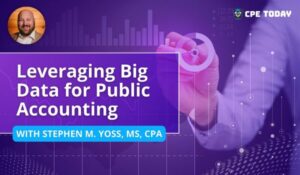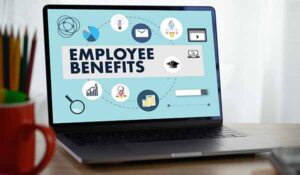
Major Topics
Learning Objectives
- Recognize ?199A’s limited effective time period, its complex calculation process and the general exclusions, limits, and restrictions applicable to the provision.
- Determine the ?199A deduction amount, the type of W-2 wages used in calculating the wage/capital limit and specify how the limit impacts the amount and availability of the deduction.
- Identify qualified business income and loss, its basic components and the ability of a taxpayer to aggregate businesses in its determination.
- Recognize the specified services trade or business exclusion, the listed excluded services and the important exceptions provided by the regulatory de minimis rule. Identify a domestic trade or business.
Course Description
The Tax Cuts and Jobs Act (P.L. 115-97), enacted Dec. 22, 2017, created, under §199A, a new deduction for up to 20% of qualified business income (QBI) from partnerships, limited liability companies (LLCs), S corporations, trusts, estates, and sole proprietorships for tax years beginning after Dec. 31, 2017. However, determining the §199A deduction amount and availability is a very complex multi-step process that may phase out some or all of the deduction. In the face of this complexity, the text provides a selected overview of the basic components of this below-the-line deduction. Qualified business income, taxpay-er’s taxable income, wage/capital limit, specified services trade or businesses, and other key components are not only defined and calculated but their interaction is demonstrated and exampled.
Compliance Information
Advanced Preparation
None
Field of Study
Taxes
Credits
2 Credits
Published Date
January 26, 2023
Revision Date
March 25, 2024Course Authors
Danny Santucci
Danny earned his Bachelor of Arts in Political Science from the University of California at Irvine in 1969. He received his Juris Doctorate from Boalt Hall School of Law, University of California at Berkeley in 1972, at which time he began practice as a tax attorney in Southern California. His legal career started with the business and litigation firm of Edwards, Edwards, and Ashton. Later he joined the Century City entertainment firm of Bushkin, Gaims, Gaines & Jonas working for many well-known celebrities. In 1980, Danny established the law firm of Santucci, Potter, and Leanders, in Irvine, California. With increasing lecture and writing commitments, Danny went into sole practice in 1995. His practice emphasizes business taxation, real estate law, and estate planning.
Overview
The Tax Cuts and Jobs Act (P.L. 115-97), enacted Dec. 22, 2017, created, under §199A, a new deduction for up to 20% of qualified business income (QBI) from partnerships, limited liability companies (LLCs), S corporations, trusts, estates, and sole proprietorships for tax years beginning after Dec. 31, 2017. However, determining the §199A deduction amount and availability is a very complex multi-step process that may phase out some or all of the deduction. In the face of this complexity, the text provides a selected overview of the basic components of this below-the-line deduction. Qualified business income, taxpay-er’s taxable income, wage/capital limit, specified services trade or businesses, and other key components are not only defined and calculated but their interaction is demonstrated and exampled.
Course Details
- Recognize ?199A’s limited effective time period, its complex calculation process and the general exclusions, limits, and restrictions applicable to the provision.
- Determine the ?199A deduction amount, the type of W-2 wages used in calculating the wage/capital limit and specify how the limit impacts the amount and availability of the deduction.
- Identify qualified business income and loss, its basic components and the ability of a taxpayer to aggregate businesses in its determination.
- Recognize the specified services trade or business exclusion, the listed excluded services and the important exceptions provided by the regulatory de minimis rule. Identify a domestic trade or business.
Intended Audience —
Advanced Preparation — None
Field of Study — Taxes
Credits — 2 Credits
IRS Program Number –
Published Date – January 26, 2023
Revision Date – March 25, 2024
Course Authors
Danny Santucci
Danny earned his Bachelor of Arts in Political Science from the University of California at Irvine in 1969. He received his Juris Doctorate from Boalt Hall School of Law, University of California at Berkeley in 1972, at which time he began practice as a tax attorney in Southern California. His legal career started with the business and litigation firm of Edwards, Edwards, and Ashton. Later he joined the Century City entertainment firm of Bushkin, Gaims, Gaines & Jonas working for many well-known celebrities. In 1980, Danny established the law firm of Santucci, Potter, and Leanders, in Irvine, California. With increasing lecture and writing commitments, Danny went into sole practice in 1995. His practice emphasizes business taxation, real estate law, and estate planning.
All of our self-study courses are NASBA approved (through our partners at K2 Enterprises) the revisions to the Statement on Standards for Continuing Professional Education (CPE) Programs (Standards).
Your Registration Includes:
- ✓ Course materials (video & PDF version)
- ✓ Unlimited attempts to complete exam
- ✓ Course materials (PDF & Sample Materials)
- ✓ Instant grading & certificate of completion
- ✓ One year access to complete your CPE
- ✓ Completion certificate



